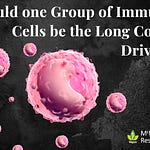Welcome to this extraordinary gathering where, for the first time, we brought together some of the world’s leading scientists, clinicians, and researchers to explore the hidden drivers behind long COVID and post-vaccine syndromes. I hosted this event because I believe we’re facing a complex and evolving medical crisis that demands open dialogue, rigorous science, and most importantly, collaboration. What you’re about to read is a powerful synthesis of expert presentations, panel discussions, and a roundtable exchange that digs deep into the mechanisms of spike protein persistence, mitochondrial dysfunction, clotting abnormalities, and the collapse of the microbiome.
Speaker 1: Professor Brigitte König (Timestamp 00:08:09)
Topic: Spike Persistence and Mitochondrial Damage
Brigitte König presented compelling evidence that spike protein persistence, whether from infection or vaccination, is central to the pathophysiology of long COVID and post-vaccine syndromes. She highlighted the spike protein’s ability to distribute throughout the body—especially accumulating in monocytes, exosomes, and plasma—and damage mitochondria across tissues, including heart and brain. König detailed how this disruption impairs cellular energy, increases inflammation, and contributes to immune failure. She emphasized that dysfunctional mitochondria may be misidentified by the immune system as pathogens, triggering a destructive response. The key to recovery, she concluded, lies in both removing persistent spike protein and restoring mitochondrial function.
Questions from Panelists:
What’s the best course of action to reverse mitochondrial damage from spike protein?
Is cytokine release and inflammasome activation the driver of rapid clinical deterioration?
Can functional medicine approaches like B-vitamins, magnesium, or CoQ10 restore mitochondrial health?
Can your testing distinguish spike from infection versus vaccine origin?
What about symptomatic individuals with negative spike tests—what could explain this?
Is hyperbaric oxygen therapy effective for mitochondrial restoration?
Could elevated lactate dehydrogenase from anaerobic metabolism contribute to organ failure?
Speaker 2: Professor Resia Pretorius (Timestamp 00:40:02)
Topic: Microclotting and Inflammation in Post-COVID Disease
Prof Resia Pretorius shared groundbreaking research on amyloid-like microclots as key players in long COVID. She explained how fibrinogen misfolding, driven by inflammatory molecules and spike protein, results in fibrinoid deposits resistant to breakdown. Pretorius described several microclot phenotypes—including those embedded with neutrophil extracellular traps (NETs), endothelial debris, or bacterial biofilm. Her team has identified amyloidogenic proteins like α2-antiplasmin trapped in clots, suggesting both immune and microbial contributions. She linked persistent clotting with neuroinflammation and post-exertional symptom worsening, noting that even mild exercise can fragment clots and intensify symptoms.
Questions from Panelists:
Is flow cytometry with PET scans the future of microclot detection?
Why does clotting onset differ between infection, vaccine types, or variants?
Are immune complexes forming amyloid clots akin to conditions like erythroblastosis?
Could blood group genetics explain individual susceptibility?
What is the significance of the rise in anticoagulant use since 2020?
Why do some patients have microclots without elevated D-dimer?
Do all long COVID and ME/CFS patients show microclotting or platelet hyperactivation?
Speaker 3: Dr. Sabine Hazan (Timestamp 01:13:45)
Topic: Microbiome Collapse and the Loss of Bifidobacteria
Sabine Hazan delivered a passionate presentation emphasizing the central role of gut microbiome dysbiosis in COVID and chronic disease. She argued that bifidobacteria, critical for immunity, plastic degradation, and neurological health, is consistently depleted in patients with severe COVID, vaccine injury, autism, Alzheimer's, Crohn’s, anxiety, and even bipolar disorder. She showed that vitamin C, bovine IgG, and ivermectin can restore bifidobacteria within 24 hours. Hazan raised concerns that mRNA vaccines may act as a "bifidophage," killing beneficial gut bacteria. She advocated for validated whole-genome sequencing to tailor treatment, stressing that microbiome restoration may unlock recovery from numerous conditions.
Questions from Panelists:
How do fecal transplant outcomes compare to cotton-based microbial therapies?
Can transplant failure be due to spike persistence in donor stool?
Is there a global threat to microbiome diversity via modernization and western diet?
What role do environmental exposures (mold, diet, antibiotics) play in gut dysbiosis?
Should microbiome matching consider ethnic and geographic compatibility?
Roundtable Summary (Timestamp 01:49:46)
During the final discussion, all speakers converged on the theme of interconnected pathologies: spike protein persistence, mitochondrial damage, chronic clotting, and microbiome collapse. They emphasized that while distinct mechanisms are at play, these systems reinforce one another in a vicious cycle. Recurrent infection, immune priming, and environmental stressors all perpetuate dysfunction.
Key points included:
Resia highlighted that reinfection remains a major overlooked driver of long COVID.
Brigitte emphasized the variability in individual mitochondrial resilience.
Shankara argued that persistent spike—even undetected in plasma—can drive immune dysregulation.
Marcus stressed the need for precision, multimodal treatment combining diagnostics with therapy.
Sabine advocated for restoring balance—microbiologically and socially—through peace, inquiry, and collaboration.
Closing Takeaways:
Shankara: “We are dealing with a bioweapon. The core is immune dysregulation and clotting.”
Marcus: “Don’t lose hope. Recovery is possible through science-driven, personalized care.”
Bridget: “We must unite science and clinical insight. Collaboration is key.”
Resia: “We are all one infection away from long COVID. Prevention and awareness are critical.”
Sabine: “Preserve the microbiome, restore balance, and end scientific censorship.”












Share this post